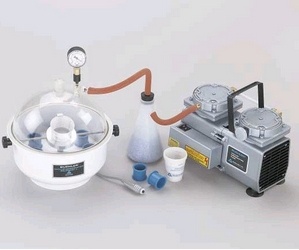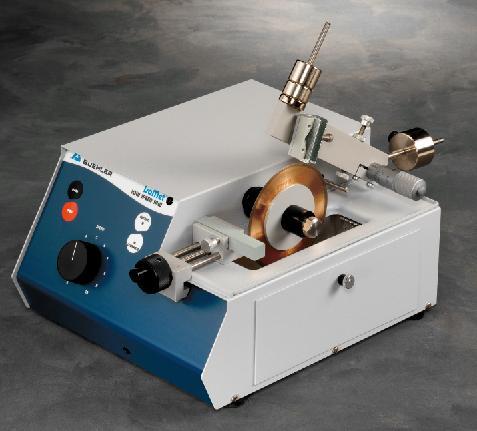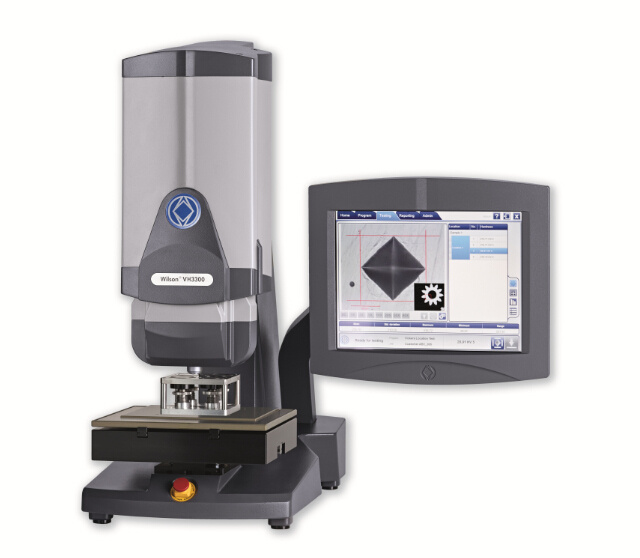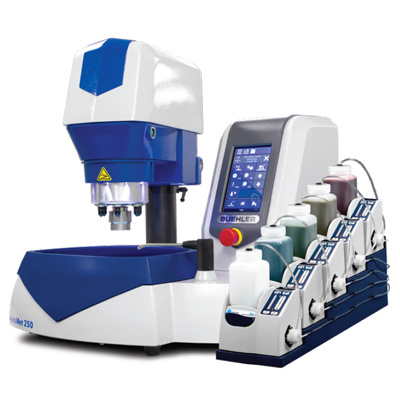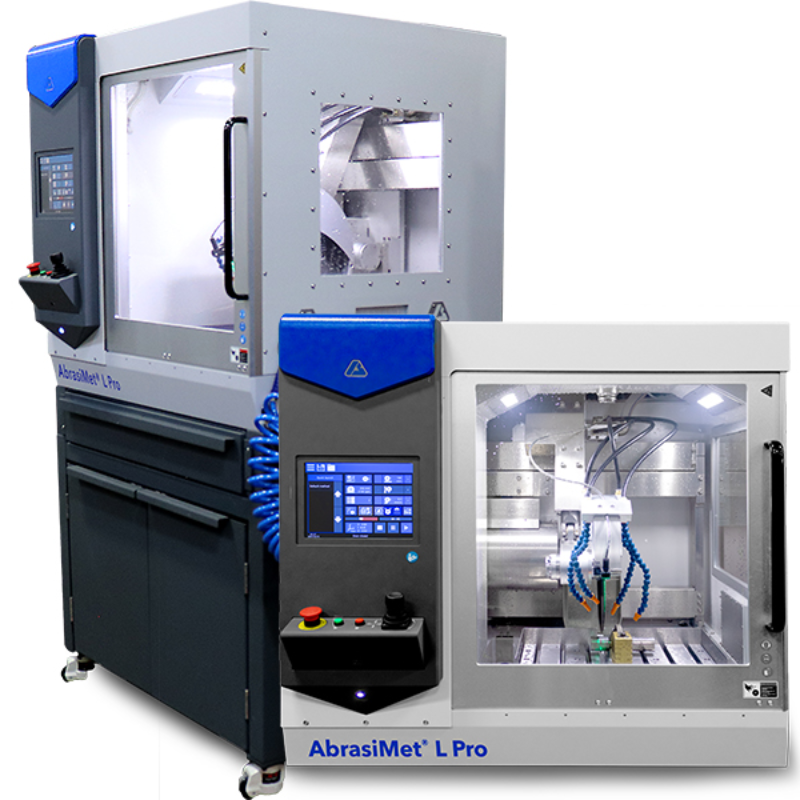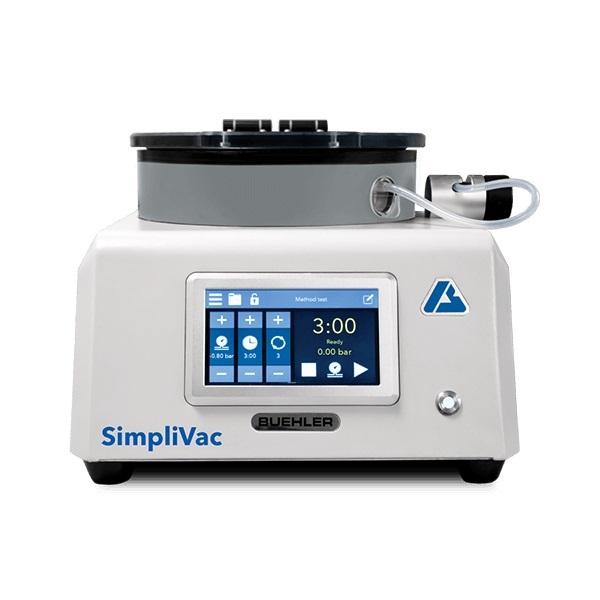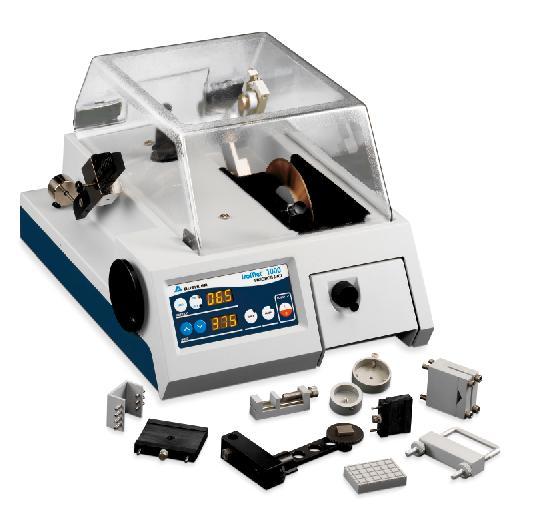电子元器件的切割和镶嵌-失效分析
2007/01/19 14:11
阅读:1590
分享:方案摘要:
产品配置单:
Cast N' Vac 1000 真空镶嵌机
型号: Cast N‘ Vac 1000
产地: 美国
品牌: 标乐
¥5万 - 10万
参考报价
联系电话
IsoMet™ 低速精密切割机
型号: IsoMet™ Low Speed Cutter
产地: 美国
品牌: 标乐
¥5万 - 10万
参考报价
联系电话
美国标乐 Buehler | AutoMet™ 250 研磨抛光机
型号: AutoMet™ 250
产地: 美国
品牌: 标乐
¥10万 - 30万
参考报价
联系电话
全自动维氏/努氏硬度计 VH3300 | 美国威尔逊硬度计
型号: VH3300
产地: 美国
品牌: 威尔逊
¥50万 - 100万
参考报价
联系电话
方案详情:
Introduction
For most microelectronic devices and packages, direct microscopic observation of a cross section is an important means of inspecting a particular defect. The creation of a cross section, as a destructive measure, is often used in the microelectronics lab as a decisive and final inspection tool after all other economical means of nondestructive inspection are employed.
In order to produce a cross section, many of the techniques used in the metals industry have been borrowed; to a large degree, with success. However, the philosophy and logic for choosing a particular method of cutting, mounting, and abrasive preparation has often been lost in the process. This is of extreme significance because the needs of the microelectronics industry vary greatly from those of the metals industry. Issues such as feature size, specific area cross sectioning, and the ability to prepare a variety of materials with different mechanical properties within a single plane of polish require an understanding of basic abrasive processes so that appropriate sectioning methods might be developed.
This issue of TECH-NOTES is the first half of a two part effort to summarize some of the basic concepts involved in proper preparation of microelectronic materials. We will discuss some simple guidelines which the microelectronic materials analyst might draw upon in the development of better preparation techniques. In particular, this issue will cover the variables involved in cutting and mounting of microelectronic materials, and summarize some of the technique and consumable choices that must be considered in order to achieve quality results. The next microelectronics issue of TECH-NOTES will continue with the abrasive processes of grinding and polishing these materials.
Specimen Preparation Philosophy
When considering preparation of a microelectronic device and/or package, the first step is to determine which materials are present in the cross section of interest. This is critical since these materials and their mechanical properties will determine, to a large degree, the course of action we take. Consider, for example, a small epoxy package in which we desire to cross section a silicon die and a gold ball bond near the die’s edge. If we were to encapsulate the package and grind to the edge of the die, (assuming the use of appropriate abrasives and technique), we might produce satisfactory results in a reasonable period of time.
This course of action would not be so easy, however, if the package were instead composed of ceramic. In this case, several choices present themselves. We can try to grind through the package, but we would, of course, require an aggressive grinding medium which may annihilate the brittle silicon upon contact. In addition to destroying the materials we plan to analyze, we would probably spend an inordinate amount of time (not to mention expense) getting to this point. A better option is to cut the package near to the plane of interest, using a precision diamond saw, and then to encapsulate the specimen for subsequent preparation.
The basic example above hints at a simple philosophy of preparation in which we carefully consider each stage of the process and it’s consequences towards the materials we choose to analyze. The following text summarizes basic cutting and encapsulation processes in order to promote a logical course of planning for microelectronic materials preparation.
下载本篇解决方案:
更多![]()
标乐先进的制样技术-汽车车身点焊样品制备
本文主要介绍铝合金电阻点焊接头的样品制备,观察铝合金点焊接头宏观结构、微观组织及显微硬度分布。客户可以通过对接头组织性能特点的管控,保证高可靠性的焊接接头。
汽车及零部件
2024/05/09
标乐先进的制样技术-片状多层陶瓷电容制样经验分析
片式多层陶瓷电容器(MLCC)具有性能极好、品种众多、规格齐全、尺寸小巧、价格便宜等特点,被广泛用于各种电路。本文将介绍如何对其进行金相制备。
电子/电气
2024/05/09
标乐先进的制样技术-水泥熟料岩相样品制备
水泥是建筑工业中的重要原料,水泥的组成成分、颗粒大小都是决定水泥性能的重要指标。在水泥生产中,利用显微镜对水泥熟料进行分析研究,通过熟料的岩相分析管控水泥熟料的烧成工艺和质量状况,快速查找熟料失效的原因。熟料岩相分析是水泥企业对原料选择、粉磨、均化、烧成、冷却等工艺过程进行合理性判断的重要依据。
建材/家具
2023/09/21
标乐先进的制样技术-刀刃的金相制备和硬度测试
随着对产品的规格要求日益严苛,成品检验作为必不可少的一环要求也水涨船高。比如钢材的热处理,其硬度测试可追溯到100年前,随着应用越来越具体、技术发展越来越完善,测试方法也一直在进步 。在竞争激烈的刀具行业中,刀片要求既能满足拥有足够的硬度去切割,又不能因过硬的硬度导致脆性失效。
材料
2023/09/18




